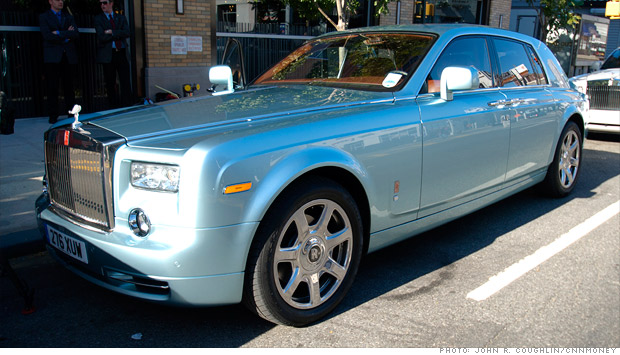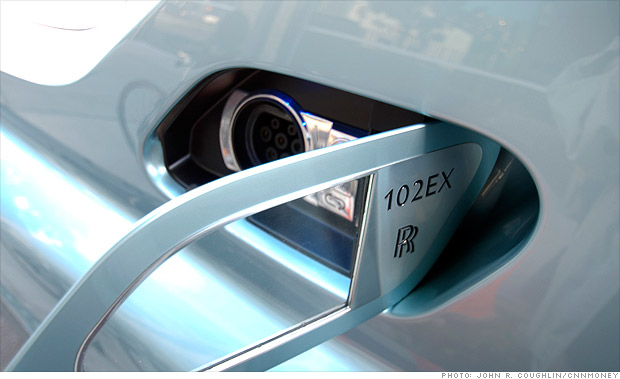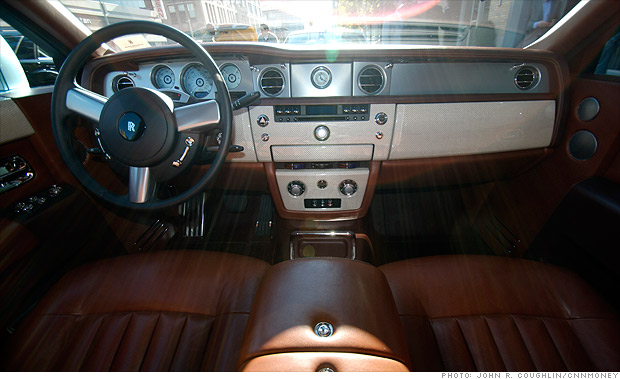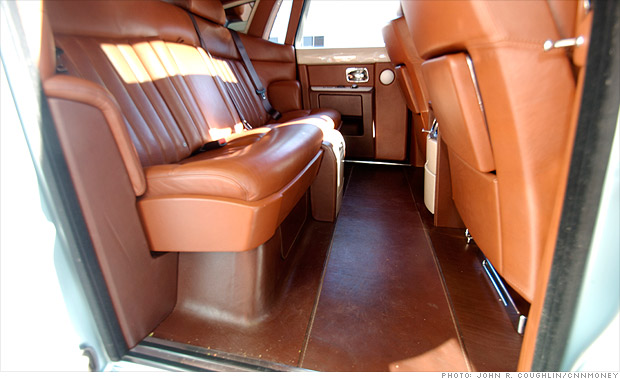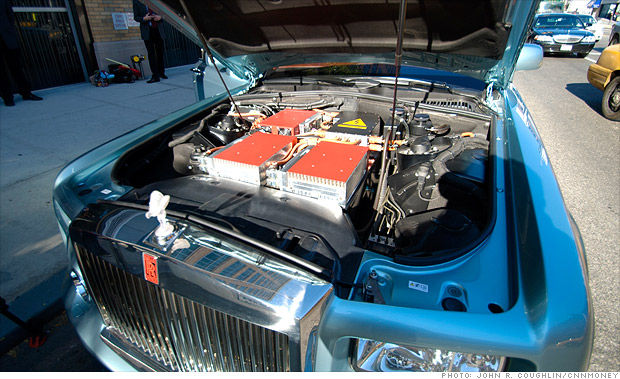The Rolls-Royce 102EX is a fully electric plug-in version of the Rolls-Royce Phantom. The only one like it in the world, it was built to gauge customer response to the very idea of an electric ultra-luxury sedan.
There's no price on this car because, at least so far, it's for display purposes only. (A regular gasoline-powered Phantom costs at least $380,000.) When asked how much it cost to develop the 102EX, Rolls-Royce representatives would only say, "buckets."
Rolls-Royce provided an opportunity to drive the car during a New York City stop on its around-the-world tour.
Click ahead for more about the world's only electric Rolls-Royce.
The name, 102EX, comes from the age of Rolls-Royce Motor Cars at the time this car was built -- 102 -- and EX for "experimental."
Rolls-Royce claims a total driving range of 125 miles following a full eight-hour charge. If true, that's remarkable, considering this car weights almost 6,000 pounds, or about 500 pounds more than a Chevrolet Tahoe SUV.
The 102EX can be recharged by either plugging it in through the elegant-looking charge port, shown here, or by using "induction charging." Induction charging works without cables or plugs. The car is simply parked in a special parking space and electricity is transferred magnetically between the ground and the car.
All the leather inside the 102EX is tanned using natural vegetable dies. There is no wood trim here, either. The surfaces that would ordinarily be covered with wood are, instead, coated with a material made from woven glass fibers.
Despite all the use of natural, renewable materials, the project manager for the 102EX insisted that this was not a "green car" project.
Most Rolls-Royce buyers are not, apparently, terribly concerned with that sort of thing. The emphasis has been, instead, on exploring how Rolls-Royce can remain relevant as technology -- and consumer expectations -- change in the future.
One benefit of being such a massive car is that there was plenty of room to fit a gigantic battery and paint-bucket-sized electric motors without compromising all-important interior space.
The back seats and trunk in the 102EX are just as big and roomy as they are in the gasoline-powered car. In fact, there's actually a little more room since there was no need for a transmission tunnel running down the center of the car.
That allowed extra space to put in a floor-level champagne cooler while still having three-across seating.
The 102EX feels -- and, in fact, is -- a bit slower than the V12-powered Phantom. While the Phantom can rocket to 60 miles an hour in a surprising 5.7 seconds, the 102EX takes about eight seconds to work up that sort of speed.
Some of the 102EX's more casual off-the-line feel is deliberate, Rolls-Royce says. If they'd wanted, they could have programmed the "gas pedal" to provide snappier response, but that seemed out of character.
As in the gasoline-powered car, the front-to-rear weight balance is nearly perfect. When pushed hard -- which we weren't able to do in the 102EX -- the Phantom is a surprisingly athletic car. The 102EX weighs more but felt just as easy and predictable to drive, at least at ordinary speeds.
The biggest question about the 102EX is probably "Who wants one?"
The answer, so far, is nobody. As it nears the end of its world tour, not a single Rolls-Royce customer has asked to buy one, at any price.
That doesn't mean the notion of a plug-in Rolls-Royce will never fly. But, for now, the world's moneyed elite just aren't ready to sacrifice their V12s and all that extra driving range..
About 4 Autos
This blog contains all information about the latest cars, car prices, car-selling and much more all the information about the automotive world, found only here: http://ready4autos.blogspot.com/
Sunday 13 November 2011
Saturday 12 November 2011
Hyundai Veloster: Looks fast, goes slow
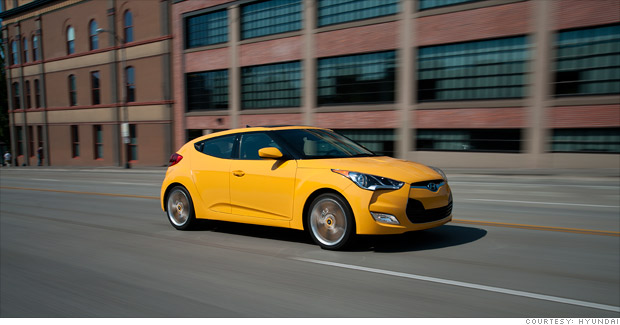
Price: $17,300
Engine: 1.6-liter 4-cylinder
Mileage: 28 City, 40 Hwy
This car is called the Veloster -- as in "velocity." With its coupe-like look and blacked-out window pillars, it's designed to resemble a motorcycle helmet.You might notice that it also resembles a doorstop. Actually, that's appropriate because, while this car has its good points, speed is not among them.
The Veloster, ironically, feels like one of the most underpowered cars I've driven in years. Not as in "Gee, it would be nice if this car had a little more guts," but as in, "Is something wrong?"
There is more to a car, of course, than raw performance so click through for an overview of everything the Veloster does have to offer. Just keep in mind that, despite its looks and its name, adrenaline surges are missing from the menu.
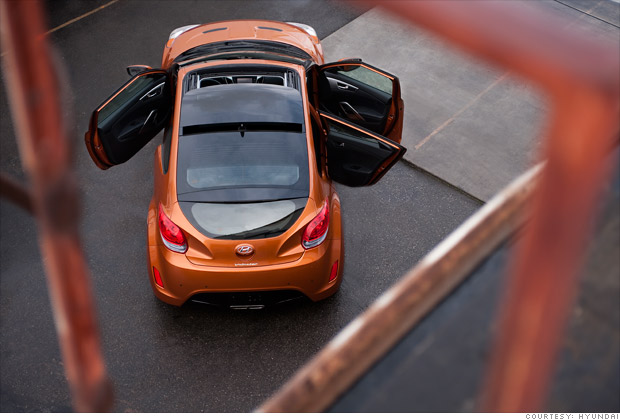
Price: $17,300
Engine: 1.6-liter 4-cylinder
Mileage: 28 City, 40 Hwy
Besides speed, one of my biggest questions about the Veloster was "What happened to fourth door?The Veloster has only three doors, although all of them open the regular way, with the hinge in the front. (Some cars have one tiny rear-hinged door in the back.) So, if Hyundai can fit two regular doors on the right side of the car, it seemed strange, to me, to have only one on the left.
The only reason, I was told by a Hyundai executive, was to maintain that cool two-door look for the driver as he approached the car to get in. Seems like a big inconvenience for a visual trick, but there you go.
Inside, the backseats themselves are adequately comfortable. I whacked my head getting in there but I assume regular occupants would only need to learn that lesson once.
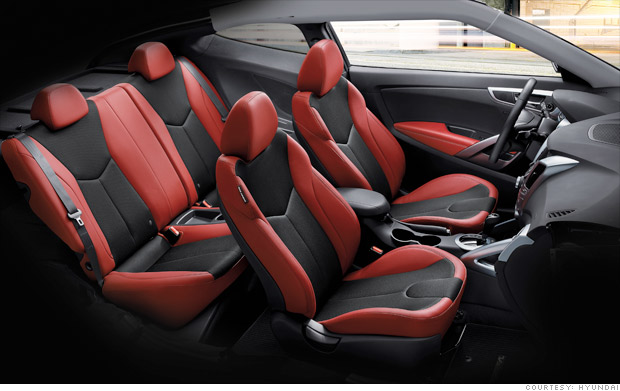
Price: $17,300
Engine: 1.6-liter 4-cylinder
Mileage: 28 City, 40 Hwy
Gas mileage is excellent. At 40 miles per gallon in highway driving, it's almost as good as the less funky-looking Hyundai Elantra compact car. (Which, by the way, offers two doors on both sides.)Fuel economy, Hyundai says, was a key factor for the Veloster's target market.
So... People willing to sacrifice practicality to buy a sporty-looking little car are interested in saving gas even it means they have to downshift to comfortably climb a slight rise in the highway?
OK, Hyundai's lost me on that one... but the fuel economy is good.
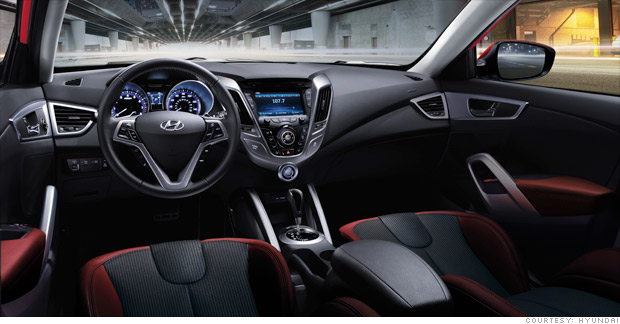
Price: $17,300
Engine: 1.6-liter 4-cylinder
Mileage: 28 City, 40 Hwy
The Veloster's steering and suspension, likewise, feel very good. There's plenty of feedback and steering is quick and responsive. Get up some speed, throw it into a curve and the Veloster feels like a proper, road-hugging sports car.You can get your Veloster with one of two available transmissions, a "dual clutch" six-speed automatic and six-speed manual.
Get the manual. It shifts nicely and feels good to use, which is important because you'll be moving that lever around like a kid working at a loose tooth.
Using the manual shifter to wring the power out of the Veloster's 1.6-liter engine -- the same one used in the subcompact Accent -- you can even work up a bit of fun in around-town driving.
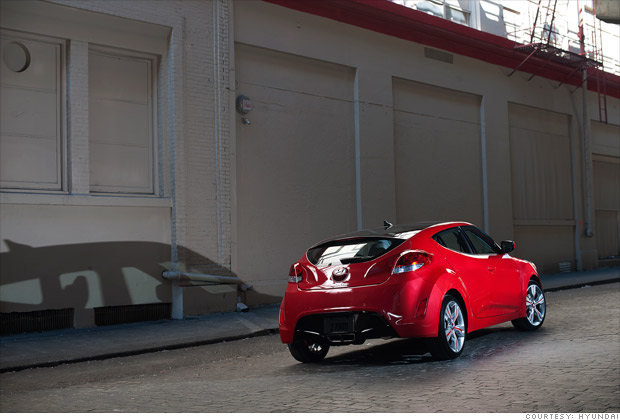
Price: $17,300
Engine: 1.6-liter 4-cylinder
Mileage: 28 City, 40 Hwy
I usually don't make such a big deal out of engine power. For instance, I feel like the meager 101 horsepower in the Fiat 500 is just fine. But that car is small and very light. Plus, it looks kind of like a high-end clothes dryer. The fact that it can power along in any rush at all is an unexpected pleasure.Yes, there are slower motor vehicles out there but, come on, it's called the Veloster, not the Keep-up-ster. For the record, Motor Trend magazine published a zero-to-60 time of 8.8 seconds for this car.
Hyundai says it was designed to "look fast even standing still," but it shouldn't feel like it's standing still when you want to go fast.
Yes, it's true -- as Hyundai says -- that the youth market values fuel economy. But young people also value authenticity. And that's the Veloster's biggest failing. With, perhaps, a little sacrifice to fuel economy, Hyundai could have delivered a car that looked like fun while actually being honest about it.
Friday 11 November 2011
CEC Fisker Karma – 2011 SEMA Show
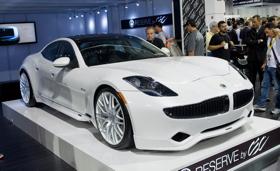 |
Fisker and CEC have teamed up to bring you the first luxury bling hybrid sports sedan, the CEC Fisker Karma. The 22-in. wheels certainly add drama to what is already a head-turning design. CEC has been named as the official tuner for Fisker, meaning you can pick the Fisker Reserve by CEC cars at Fisker dealerships and CEC tuning centers. This one has an aftermarket body kit and wheels.
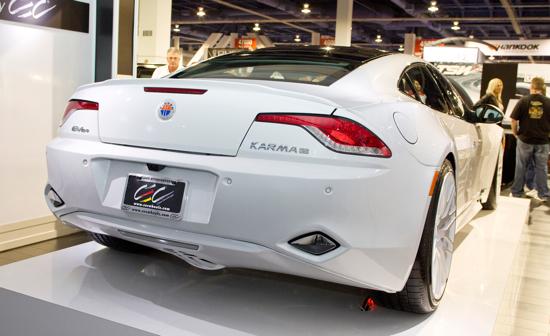
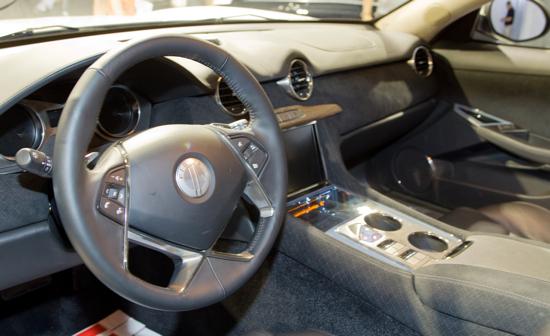
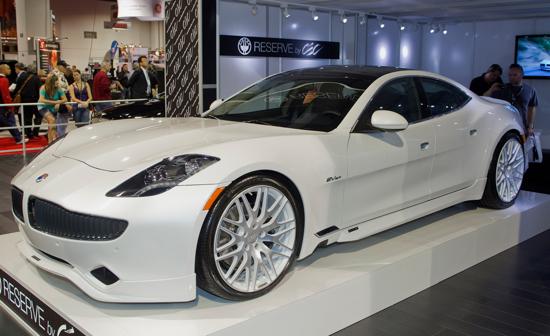



Import From: http://editorial.autos.msn.com/blogs/autosblogpost-show.aspx?post=cf81a7e9-4dc4-43e1-92d8-4a8797ab994b
Thursday 10 November 2011
Exhaust Notes GT Academy Winner Heitkotter's Next Step is the 24 Hours of Dubai
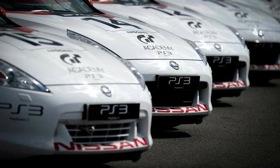 |
It all culminates in January at the 24 Hours of Dubai: That's when video-game player and GT Academy winner Bryan Heitkotter will race, professionally, with European GT Academy winner Jann Mardenborough in a Nissan 370Z.
The GT Academy was a contest that started last December in which Gran Turismo 5 players competed for a seat in a real race car. Thousands entered, 32 players rose to the top, and 16 of those were invited to a seven-day whirlwind racing and evaluation program at the Silverstone circuit in the United Kingdom.
“I'd raced at autocross events and track days, but I'd never been wheel-to-wheel before Silverstone,” Heitkotter, 30, said when asked about his racing experience and goals. “My ultimate choice would be driving in Formula One, but I think I'm a bit old for that. Otherwise, endurance racing.”
The Silverstone program included seat time in the Nissan GT-R and 370Z. Events consisted of go-karting, skid-control exercises, rally driving and wheel-to-wheel racing. It was Heitkotter's first racing-school experience, and he came away with more than just a daily helmet headache.
But he won the Silverstone test, which was also turned into a reality show with people getting voted off daily. The week ended with the top four drivers going at it on the 3.7-mile track. After that, Heitkotter was swept into a six-month driver-development program that began last July. It included driving, obviously, but also a strict diet and exercise program to keep him in top form.
Heitkotter might not be a bad bet this January, if past winners of the GT Academy are any indication. The first winner, Lucas Ordóñez, came in second place with his LMP2 team at the 24 Hours of Le Mans this year. And, if Heitkotter drives anything like he did in our two-race GT5 session, I wouldn't bet against him, either.
Content provided by AutoWeek.
Get more Car News from AutoWeek.
Get the latest Car Reviews from AutoWeek.
Import From: http://editorial.autos.msn.com/blogs/autosblogpost.aspx?post=03c0186e-22bc-4b1c-8b0b-4e77a348b020
Wednesday 9 November 2011
Another day at SEMA has wrapped -- let's take a look at what went down on one of the craziest show floors on the car-show circuit: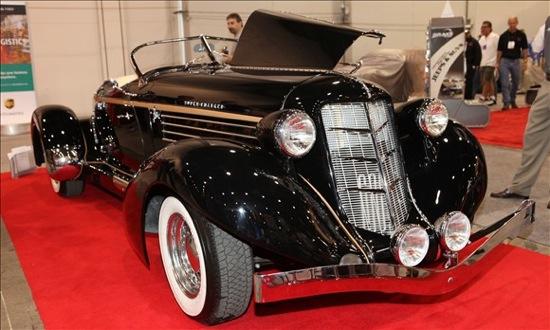 NASCAR driver David Ragan walked the floor with MSN Autos' own James Tate to pick out his favorite rides of the show, including this California Custom Coach replica of an Auburn-manufactured 1935-'36 coupe that uses a modern 295-horsepower V8 engine and 4-wheel disc brakes, and it has a more-than-respectable 4.7-second sprint time to 60 mph. 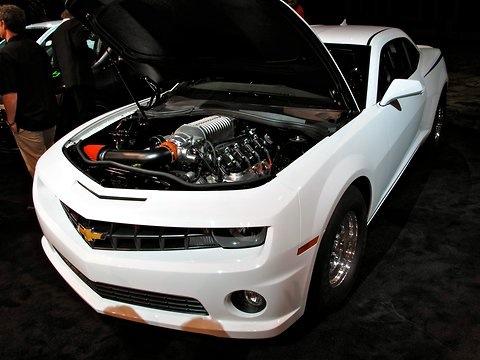 Sam Smith looked at the history behind the COPO Camaro redux, pictured above. For the uninitiated, COPO stands for Central Office Production Order. It was a factory order form that originally was used for specialty vehicles, such as commercial trucks, but that enterprising dealers in the late 1960s used to create unholy combinations of road-going bodies and monster engines. Chevy's proof-of-concept vehicle is a acknowledgment by General Motors that Chevy will homologate the Camaro for sportsman drag racing. 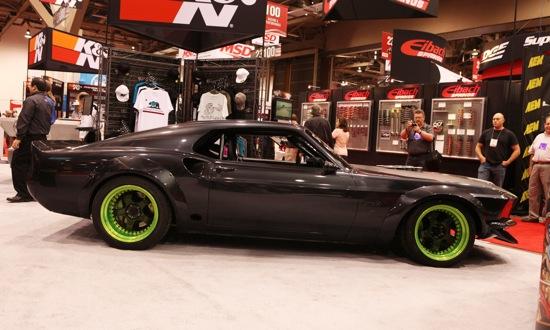 Chuck Tannert talked to 2010 Formula Drift champ Vaughn Gittin Jr. about his '69 Mustang RTR-X, built in collaboration with Team Need for Speed. The drift vehicle combines the best of classic American muscle -- not to mention a modern Mustang Boss 302's 5.0-liter V8 engine -- with touches from Asian-influenced drifting culture and high-tech flourishes, and is "a blast to thrash around in," Gittin says. Plus, there's a quick, cool video about the building of the RTR-X thrown in. 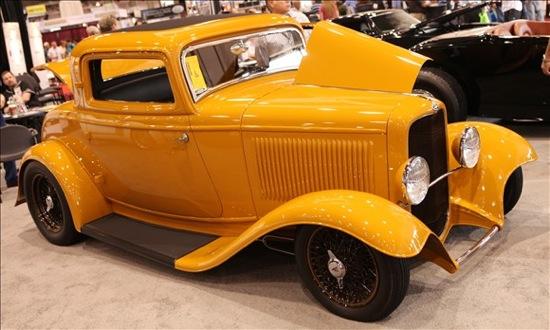 Hot rods -- extreme body and performance mods well outside of factory spec -- are at the heart of the SEMA show, and that's why Tate scoured the show looking for the best hot rods on display, including this 1932 Ford coupe with metallic pumpkin-orange paint, a Chevy crate engine 350 Barry Grant 3x2's, and a GearStar 700R transmission with hidden shifter. |
Import From: http://editorial.autos.msn.com/blogs/autosblogpost.aspx?post=bcd48d05-8b7d-4a9c-a9d9-1f9f59377f2c
Tuesday 8 November 2011
Matte-Paint Finishes Shine at SEMA
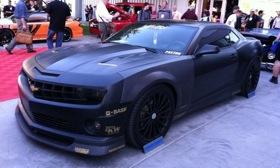 |
A tour around the halls that make up the SEMA show confirms the growing popularity of the matte finish for car exteriors.
So what's new now? Two things:
1. All the colors of the rainbow are fair game--not just the typical white, black and gray. Olive green? No problem. We've spotted the matte look on burgundy, beige and blue, too.
But there are drawbacks to a matte finish. It's hard to keep clean, you have to keep wax away and eventually it'll polish itself because of the elements.
But there are positives, too: It looks great on most cars, you don't ever have to wax it, and it's easier to do at home than a polished finish.
2. Because the mattle look is popular, there's an easier and less expensive way to get it--matte wraps. The material gives almost the exact same look as matte paint but for a fraction of the cost. A quick search brought up results for as low as $650 to wrap a car, and a few hundred more for a truck or SUV.
The Subaru wagon seen in the photo gallery uses a matte wrap instead of paint. Can you tell the difference?
 |
Content provided by AutoWeek.
Get more Car News from AutoWeek.
Get the latest Car Reviews from AutoWeek.
Import From: http://editorial.autos.msn.com/blogs/autosblogpost.aspx?post=b2653792-a890-4947-99d3-010e587bbb15
Monday 7 November 2011
Electric Cars' Benefit to Manufacturers Is More Than Just Sales
If you're wondering why many automakers are rushing to roll out electric vehicles despite overall weak sales for models already introduced or on the road, this could have something to do with it: According to this story by Jerry Hirsch in the Los Angeles Times, EVs act as halo cars for a certain set of tech-savvy consumers, and the draw of the EV that brings those curious shoppers into the dealerships is translating into sales for other models.
"Shoppers come in to check out the electric vehicles," Hirsch writes, "but then drive off with something else if they find they can't afford the premium for the new technology."
Not only that, but the interest is also helping automakers such as Nissan, which makes the Leaf EV, and Chevrolet, which produces the Volt, pull customers from competing manufacturers. According to Hirsch:
... the Volt is a lot more likely to attract the attention of a shopper who previously didn't consider Chevrolet. About 78% of Volt buyers — based on data from the first half of this year — didn't own a Chevrolet at the time of the purchase, said Barbara Keys, a [R.L. Polk & Co.] consultant.
That's almost twice the rate at which other Chevy models lure buyers of other brands, and the same is true for Nissan. According to Polk data, about 90 percent of Leaf buyers are new to Nissan, which translates to a conquest rate of 52 percent -- far above the average for Nissan vehicles.
Hardest hit by the respective conquest rates? Toyota, which originally kicked off the modern demand for alternative-powertrain vehicles with its Prius hybrid model. According to Nissan, 18 percent of Leaf buyers trade in a Prius during the purchasing process, and 38 percent trade in a Prius or other Toyota vehicle. General Motors says, too, that the Prius is the vehicle most often traded in during the purchase of a Volt, accounting for 7 percent of all sales.
The article also points out that the Volt, despite modest sales, is helping Chevrolet boost consumer interest in California, traditionally one of its worst sales markets. California sales account for 37 percent of all Volt purchases, while Nissan sells a whopping 60 percent of its Leaf vehicles in the Golden State. (It should be noted that these figures certainly reflect that California was among the first group of states to receive both the Volt and the Leaf during their respective rollouts.)
[Source: The Los Angeles Times.]
Import From: http://editorial.autos.msn.com/blogs/autosblogpost.aspx?post=b10107b5-35ad-4ed2-8c82-1bb9345ec7be
Subscribe to:
Posts (Atom)
